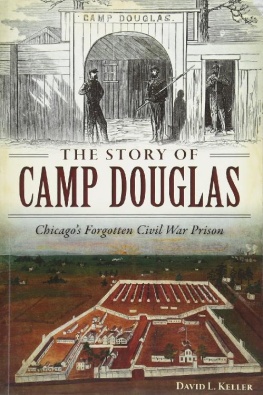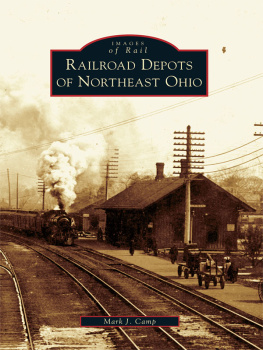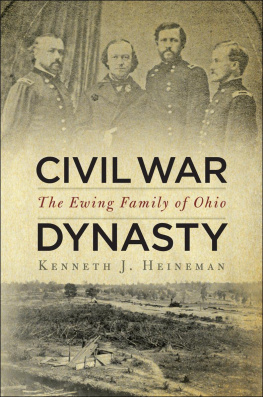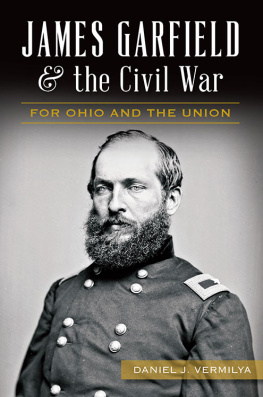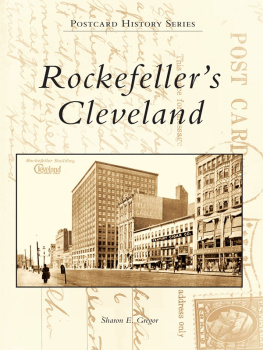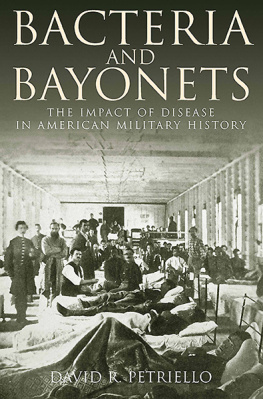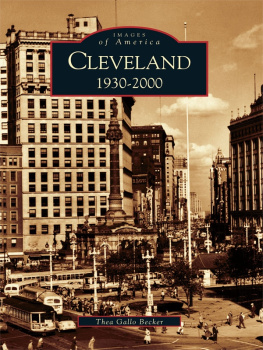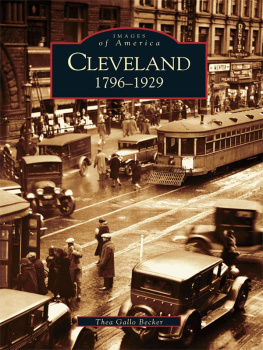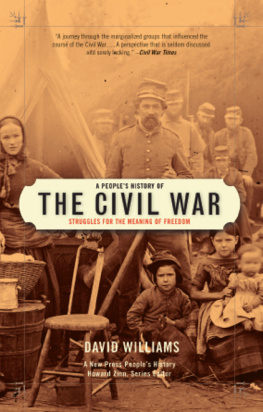BEHIND BAYONETS
DAVID VAN TASSEL, WITH JOHN VACHA
Behind
Bayonets
The Civil War in
Northern Ohio
_____________________________________________________
Published in cooperation with
the Western Reserve Historical Society
The Kent State University Press
Kent, Ohio
PUBLICATION OF THIS BOOK WAS SUPPORTED BY A GRANT FROM THE CLEVELAND FOUNDATION
2006 by The Kent State University Press, Kent, Ohio 44242
ALL RIGHTS RESERVED
Library of Congress Catalog Card Number 2005016055
ISBN-10: 0-87338-850-x
ISBN-13: 978-0-87338-850-4
Manufactured in the United States of America
10 09 08 07 06 5 4 3 2 1
Library of Congress Cataloging-in-Publication Data
Van Tassel, David D. (David Dirck), 19282000
Behind bayonets : the Civil War in northern Ohio / David Van Tassel, with John Vacha.
p. cm.
Published in cooperation with the Western Reserve Historical Society.
Includes bibliographical references and index.
ISBN-13: 978-0-87338-850-4 (pbk. : alk. paper)
ISBN-10: 0-87338-850-x (pbk. : alk. paper)
1. OhioHistoryCivil War, 18611865. 2. OhioHistoryCivil War, 18611865Pictorial works. 3. OhioHistoryCivil War, 18611865Social aspects. 4. United StatesHistoryCivil War, 18611865Social aspects. 5. Cuyahoga County (Ohio)History, Military19th century. 6. Cuyahoga County (Ohio)Social conditions19th century. I. Vacha, John. II. Western Reserve Historical Society. III. Title.
E525.V36 2005
973.709771dc22 2005016055
British Library Cataloging-in-Publication data are available.
Contents
Foreword
BY EMILY VAN TASSEL
D AVID VAN TASSEL DEVOTED HIS CAREER to the promotion of historical understanding and public education. He wrote his first book on how Americans had invented themselves in part through how they chose to record their history. After his retirement, he planned to return to a manuscript that he had been working on, off, and on for several decades, which would have brought his first book, Recording Americas Past, through to the end of the twentieth century. However, as he was fond of quoting, the best laid plans. This, then is his final book. It is a continuation of his exploration of how we as a people have used history to express who we are and who we wish to be.
History education was the driving force in my fathers professional life. He cared deeply about his students and was known to get projects funded at times specifically to provide employment for graduates when history jobs were scarce. He promoted the study of history in secondary schools as well as in college, creating the National History Day competition that has touched millions of students and sparked in many of them an abiding interest in the past. He, along with John Grabowski, pioneered the city encyclopedia with The Encyclopedia of Cleveland History, which has served as a model for several other city encyclopedias. He served as vice president for the Teaching of the American Historical Association and helped create several graduate programs in public history at Case Western Reserve University.
The exhibit upon which this book is based was for him an opportunity to see historical creation from two very different perspectives: first from the familiar side of looking over and analyzing the kinds of artifacts and recollections that Clevelanders chose to keep or record; and second from the recording side, in his curational role of putting the artifacts and recollections together into a meaningful story.
When going through my fathers papers to turn over to the Western Reserve Historical Society, I came across transcriptions of notes taken in seminars he taught at the University of Texas in the 1960s. He had a different student act as secretary each week, with minutes to be provided to every other student. He explained to them that this was to be their first practical lesson in historiography: who writes the history shapes the history written. This book and exhibit represent that idea on many levels.
It was initially to be my task to complete the manuscript for this book after my father died. However, when I found it emotionally too difficult to proceed, John Vacha graciously stepped in and put the pieces together. My family and I are very grateful for what he has done.
Preface
I NEVER EXPERIENCED DAVID VAN TASSELS classroom persona, having taken my history degrees shortly before his arrival at Case Western Reserve University in 1968. As a secondary teacher, however, I soon met him at a local history contest he organized for area students in 1974. I witnessed its rapid growth into a state contest and then into what is now National History Day. I also became involved in another of his many projects, The Encyclopedia of Cleveland History, which played a significant part in developing my own interest in the writing of local history. According to his former student and later colleague, John Grabowski, David had a way of getting people to say yes. Over the years there have been hundreds, perhaps thousands, who have said yes and have carried on the outgrowths of his vision. So, when John asked if I would undertake the completion of Davids unfinished manuscript on the Civil War, I had to say yes.
This book is a part of Davids last project, the exhibit Civil War, for God, Union and Glory, which he curated for the Western Reserve Historical Society shortly after his retirement in 1998. Late in his teaching career David developed an interest in the Civil War and offered a course on the topic at Case. When the Historical Society decided to mount an exhibit of its nationally renowned Civil War collection, David, a trustee of the Society, volunteered to curate it and prepare a catalog. The catalog was later recast as a complementary, follow-up monograph focusing more closely on the events behind the lines on the homefront. Instead of simply translating the exhibit into a textual format, David decided to use little-known archival material uncovered during his curatorial research to provide a new perspective on the war that derived from Cleveland and northeast Ohio. David felt that this would provide an interesting, fresh view of the conflict that would be especially appealing to a regional audience and at the same time convey to that audience the power of original source materials, be they excerpts from letters or diaries or reproductions of photographs that depict local scenes. Tragically, his unexpected death in 2000 occurred before he was able to bring this new approach to completion.
At the time of his death, David had completed three parts of the present text (the prologue and ), and a concluding epilogue. While more might have been added, we decided to confine the new material to the minimum necessary to provide closure to what should remain essentially the work of David Van Tassel.
While we were unable to discover any outline among Davids effects, there were numerous clues both in the completed text and the source materials as to where he might have gone with the remainder of the work. It was clear, for example, that he intended to conclude with the Lincoln funeral, probably in an epilogue to balance the opening prologue. He also had collected material on the Soldiers and Sailors Monument, which, considering what he had done with the Perry Monument dedication, suggested additional epilogue matter. At the time of his death, he had apparently been in the process of going through the Oliver H. Perry letters; this provided another connecting link for the added text. Therefore, with no intention of suggesting anything in the nature of the paranormal, I can say that I truly felt a sense of collaboration with David in completing this manuscript.



